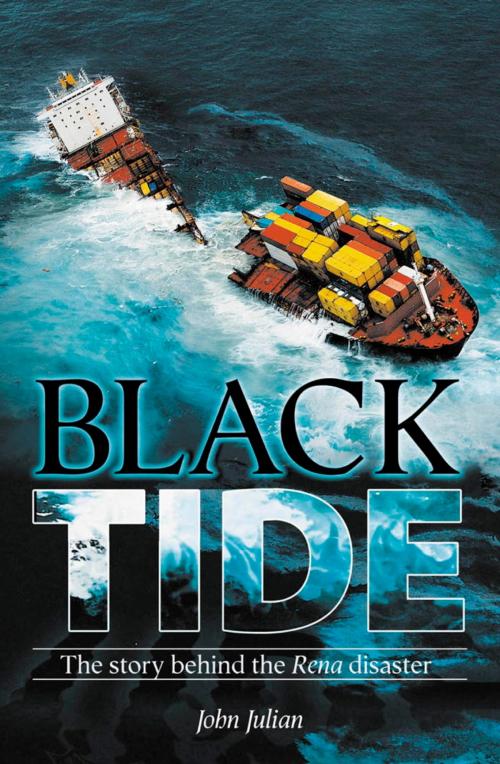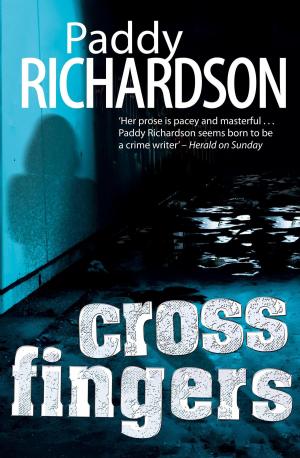| Author: | John Julian | ISBN: | 9781869712822 |
| Publisher: | Hachette New Zealand | Publication: | April 20, 2012 |
| Imprint: | Hodder Moa | Language: | English |
| Author: | John Julian |
| ISBN: | 9781869712822 |
| Publisher: | Hachette New Zealand |
| Publication: | April 20, 2012 |
| Imprint: | Hodder Moa |
| Language: | English |
When the 236-metre long container ship Rena ploughed into and was impaled upon the Astrolabe Reef off Tauranga at 2.20am on 5 October 2011, it began one of the biggest salvage operations and environmental disasters in New Zealand history. The Rena was carrying 1368 containers, 1700 tonnes of heavy fuel oil and 200 tonnes of marine diesel, all of which threatened to enter the sea. Salvors worked round the clock to stem the black tide and thousands of New Zealanders volunteered to clean up beaches and rescue wildlife. In Black Tide John Julian investigates the real story behind the Rena catastrophe and attempts to answer the many questions surrounding the disaster. What really happened on that fateful night and why did the Rena run aground? Who is responsible? What could be done better and faster? And, importantly, is New Zealand able to effectively respond to maritime disasters? The Rena?s circumstances are complicated ? built in Germany, registered in Liberia, insured in Sweden and reinsured in England, owned by a Greek company, chartered to a Swiss group and crewed by Filipinos ? and the story of the shipwreck is no less fraught. Black Tide looks for information amid the flotsam and jetsam and addresses the most important question of all: what can be done to stop this happening again? When the 236-metre long container ship Rena ploughed into and was impaled upon the Astrolabe Reef off Tauranga at 2.20am on 5 October 2011, it began one of the biggest salvage operations and environmental disasters in New Zealand history. The Rena was carrying 1368 containers, 1700 tonnes of heavy fuel oil and 200 tonnes of marine diesel, all of which threatened to enter the sea. Salvors worked round the clock to stem the black tide and thousands of New Zealanders volunteered to clean up beaches and rescue wildlife. In Black Tide John Julian investigates the real story behind the Rena catastrophe and attempts to answer the many questions surrounding the disaster. What really happened on that fateful night and why did the Rena run aground? Who is responsible? What could be done better and faster? And, importantly, is New Zealand able to effectively respond to maritime disasters? The Rena?s circumstances are complicated ? built in Germany, registered in Liberia, insured in Sweden and reinsured in England, owned by a Greek company, chartered to a Swiss group and crewed by Filipinos ? and the story of the shipwreck is no less fraught. Black Tide looks for information amid the flotsam and jetsam and addresses the most important question of all: what can be done to stop this happening again?
When the 236-metre long container ship Rena ploughed into and was impaled upon the Astrolabe Reef off Tauranga at 2.20am on 5 October 2011, it began one of the biggest salvage operations and environmental disasters in New Zealand history. The Rena was carrying 1368 containers, 1700 tonnes of heavy fuel oil and 200 tonnes of marine diesel, all of which threatened to enter the sea. Salvors worked round the clock to stem the black tide and thousands of New Zealanders volunteered to clean up beaches and rescue wildlife. In Black Tide John Julian investigates the real story behind the Rena catastrophe and attempts to answer the many questions surrounding the disaster. What really happened on that fateful night and why did the Rena run aground? Who is responsible? What could be done better and faster? And, importantly, is New Zealand able to effectively respond to maritime disasters? The Rena?s circumstances are complicated ? built in Germany, registered in Liberia, insured in Sweden and reinsured in England, owned by a Greek company, chartered to a Swiss group and crewed by Filipinos ? and the story of the shipwreck is no less fraught. Black Tide looks for information amid the flotsam and jetsam and addresses the most important question of all: what can be done to stop this happening again? When the 236-metre long container ship Rena ploughed into and was impaled upon the Astrolabe Reef off Tauranga at 2.20am on 5 October 2011, it began one of the biggest salvage operations and environmental disasters in New Zealand history. The Rena was carrying 1368 containers, 1700 tonnes of heavy fuel oil and 200 tonnes of marine diesel, all of which threatened to enter the sea. Salvors worked round the clock to stem the black tide and thousands of New Zealanders volunteered to clean up beaches and rescue wildlife. In Black Tide John Julian investigates the real story behind the Rena catastrophe and attempts to answer the many questions surrounding the disaster. What really happened on that fateful night and why did the Rena run aground? Who is responsible? What could be done better and faster? And, importantly, is New Zealand able to effectively respond to maritime disasters? The Rena?s circumstances are complicated ? built in Germany, registered in Liberia, insured in Sweden and reinsured in England, owned by a Greek company, chartered to a Swiss group and crewed by Filipinos ? and the story of the shipwreck is no less fraught. Black Tide looks for information amid the flotsam and jetsam and addresses the most important question of all: what can be done to stop this happening again?















